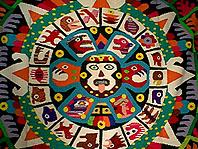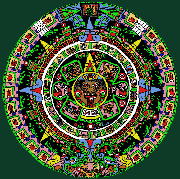
 Check out this FAQs
page for the answers to some of the most asked questions about
Mexico. Check out this FAQs
page for the answers to some of the most asked questions about
Mexico.
Have a question about
Mexico? Click on CONTACT to the left and send it along.
What is
the official name of México?
The
United Mexican States
What is
its capital and where is it located?
The capital of México is México City, also known as Distrito
Federal (the Federal District), corresponding to Washington, D.C. in
the U.S.. It annually vies with Tokyo, Japan, as the world's largest
city. The exact population of the city, itself is 9.3 million, according
to the 2000 census. But that of the metropolitan area is somewhere around
26 million. The city is divided into 16 delegaciones (similar to
the boroughs of New York City) are governed by elected delegados who are
responsible for garbage collection, patching potholes, etc. But the city
also has various colonias, or neighborhoods. It
stands in the Valley of México at an altitude of 7,500 feet, surrounded
by active and inactive volcanoes.
How
many states make up México?
The country is divided into 31 states plus the Distrito Federal--Aguascalientes, Baja California, Baja California Sur, Campeche, Chiapas, Chihuahua, Coahuila, Colima,
Durango, Guanajuato, Guerrero, Hidalgo, Jalisco, México,
Michoacán de Ocampo, Morelos, Nayarit, Nuevo León, Oaxaca, Puebla, Querétaro,
Quintana Roo, San Luis Potosí, Sinaloa, Sonora, Tabasco, Tamaulipas, Tlaxcala,
Veracruz-Llave, Yucatan, and Zacatecas.
What kind of
legal system does México use?
México obtained its independence from Spain on September 16, 1810,
approving its latest Constitution on February 5, 1917. México's legal
system is a mixture of U.S. constitutional theory and Napoleonic civil
law with judicial review of legislative acts. The Constitution provides
for a federal republic operating under a centralized government.
Where did México
get the design for its flag?
The Mexican flag has three equal vertical bands of green, white, and
red. The coat of arms--an eagle perched on a cactus, devouring a snake--is taken from the an Aztec legend.
What is México's
national currency?
The Mexican currency is the Peso Mexicano (Mexican peso) or
plural pesos. Approximately 11 pesos equal one U.S. dollar.
Where is México
located?
México is located in Mesoamerica (Middle America), bordering the
Caribbean Sea , the Gulf of México and the Pacific Ocean, between
Belize and Guatemala and the US.
México has a
total area of nearly two million square km (slightly less than three times
the size of Texas). Its diverse landscape features high, rugged
mountains, low coastal plains, high plateaus, and desert. The highest
elevation is the volcano Pico de Orizaba (5,700 m). But it's true wealth
comes from its natural resources, including petroleum, silver, copper,
gold, lead, zinc, natural gas, and timber.
What is the
climate like in México?
México enjoys just about every type of climatic condition, from the
dry, clear air of deserts and semi-arid high plateaus, to the
rain-forest-like humidity in the State of Chiapas to the south. Its complicated terrain, varied
altitudes (nearly half of the country is above 5,000 feet ), and the
influence of adjacent seas and oceans makes for diverse climatic
conditions.
Most of the
country is exceptionally dry, particularly in the northern regions and
the Baja Peninsula. Southern México and the Yucatan Peninsula
experience pronounced rainfall, with areas of the State of Chiapas
tallying some 200 inches of annual precipitation. As in most tropical
regions, México has two weather seasons: rainy and dry. Generally rains
fall and temperatures rise from June through October, leaving November
through May as the more temperate, drier season.
How
many people live in México?
México
is the most populous Spanish-speaking country in the world and the
second most-populous country in Latin America after Portuguese-speaking
Brazil. According to the latest statistics, México's total population
is close to 99 million and it is growing at a rate of 1.77 percent per
year. Mestizos (those of Indian and Spanish blood) makes up 60 percent
of the population, followed by indigenous peoples (30 percent), whites
(9 percent), and other ethnic minorities (1 percent).
About 70 percent
of Mexicans live in urban areas. Many emigrate from rural areas that
lack job opportunities, such as the underdeveloped southern states and
the crowded central plateau, to the industrialized urban centers--México
City, Guadalajara, Puebla, and Monterrey--and the developing areas along
the U.S._México border--Tijuana and Ciudad Juarez. According to some
estimates, the population of the area around México City is close to 26
million, putting it in competition with Tokyo as the most populated city
in the world.
What is the
most prominent religion of Mexicans?
At least 89 percent of Mexicans are Roman Catholic, while 6 percent is
Protestant. A growing number are Pentecostal.
Is Spanish
the only language spoken in México?
Although Spanish is the most widely spoken language in México, there
are over 60 indigenous languages and dialects, including Mayan (the
ancient language of the Maya) and Nahuatl (the language of the Aztecs),
spoken as the every day language in many places in México.
1
2
next
page-> |

